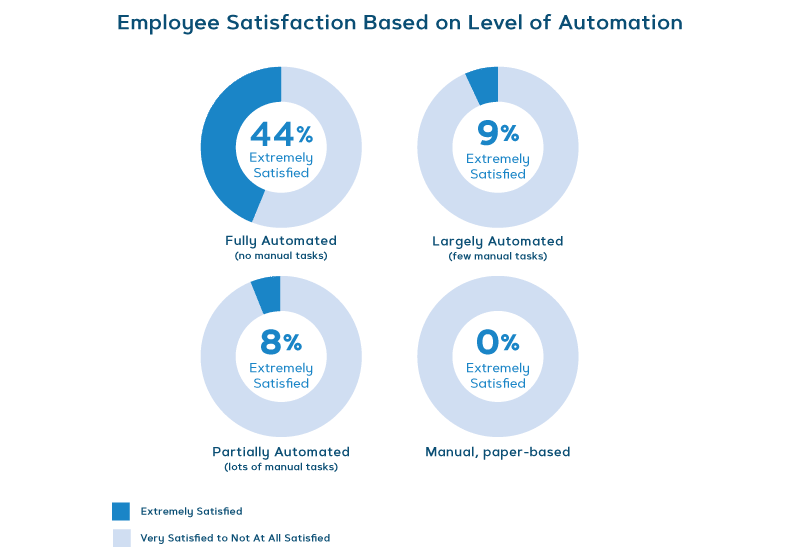Despite the economic downturn, the media industry remains red hot and is expected to see another stellar, record-breaking year.
As ad spending continues to climb, media buying and advertising agencies take on more, increasingly complex work. As a result of The Great Resignation and an unrelenting labor shortage, there are fewer people to do the work. It’s leading to stressed-out employees, making it tough for agencies to earn their loyalty.
Here we look at the pressing staffing shortage in the media world and how agencies are addressing it with strategic staffing and automation.
The current state of the media industry and how it got there
Ad spending took a substantial hit from the pandemic, almost coming to a standstill. Without people commuting or traveling, there was little need for billboards and radio ads, and most brands were holding tight to their purse strings and taking a wait-and-see approach with their budgets.
But, the spending freeze didn’t last long.
This year, despite economic uncertainty that has cooled things off a bit, Magna predicts that ad spending will top $300 billion for the first time, hitting $320 billion.
All that spending means agencies have a lot to do. They’re handling greater volumes of work, and more complicated projects as brands look to move into digital, diversify and mix channels. They’re also dealing with outdated technology that’s slowing them down.
“There’s this desire to do the greatest, coolest, most amazing stuff, and really push these tools to the limits, and that runs headlong into this complexity problem,” said Brian Dolan, CEO of ad tech staffing and services platform WorkReduce in a Marketing Dive article.
What’s more, a major staffing shortage continues to drain their capacity and it shows no signs of letting up.
What happened to the media industry’s staff?
The industry’s labor crisis isn’t new. It goes back to the 2008 recession when agencies were forced to lay people off. Fewer people meant that those who kept their jobs were often doing the work of many, and they were starting to feel the heat.
In 2020, the COVID-19 pandemic hit and forced another massive round of layoffs. Forrester reports about 50,000 people in the media industry lost their jobs.
By 2021, agency staff was spent, tired of working long hours and often doing without the perks that once helped to take the sting out of their demanding jobs. The shift to remote work and The Great Resignation compelled many of them to bid farewell to their agency jobs, opting to work for themselves, take remote opportunities, or leave the industry altogether for other careers.
Today, the mass exodus from media continues and it’s leaving the industry struggling to find the skilled workers they need.
In a Business Insider article, Omnicom Media Group CEO Florian Adamski said some agencies are seeing annual turnover rates upwards of 50%. He said that companies must help employees cope with burnout or “they will continue to hemorrhage staffers.”
The freelance platform We Are Rosie surveyed hundreds of ad people and found that 63% plan to change jobs or careers this year, 40% demand flexible hours and every respondent said they wouldn’t consider a job that doesn’t offer the option of remote work.
Forrester’s 2022 report on agencies predicts that staffing will remain a concern throughout the year and estimates that the industry is facing an acute shortage of 50,000 people globally.
The report also warns of a coming leadership crisis. Forrester Analyst Jay Pattisall says, “As industry leaders retire or leave, the danger is there will not be enough people with experience to fill those roles.”
What’s the industry to do?
Creative staffing solutions, including automation technology, offer relief
Like many industries affected by labor shortages amidst economic uncertainty and pressures to cut and control costs, the media world is turning to technology.
Artificial intelligence and automation can help address heavy workloads and help the industry do more with less, freeing staff from mundane tasks and elevating their roles by empowering them to handle more strategic initiatives.
A Forrester report predicts that by 2023, 11% of creative and media agency tasks and 23% of the overall agency will be automated as the technologies extend their reach into areas like finance.
Automating AP departments offers powerful relief to agencies. Their AP departments play a key role, working behind the scenes to handle the financial side of media buys. They process scores and scores of invoices for media suppliers, contractors and others. No matter how experienced or how fast they work, it takes an average of 10 days to process a single invoice. The more work their agency takes on, the more invoices they have to process.
To better understand the staffing challenges currently facing financial departments, AvidXchange and the Institute of Finance & Management (IOFM) conducted an “AP Professional Career Satisfaction Survey.”
One key takeaway we found was that the more automation an organization has, the more satisfied AP professionals are in their roles. Staff who don’t feel valued or cared for are more likely to look for the door. And the less automated the AP department is, the higher the likelihood that its AP staff is looking for a new job.

AP automation frees up staff from the manual tasks of their job, like the need to manually enter information into supplier websites in the media industry. The automation can help reduce time and errors and empower AP professionals to process an invoice in a fraction of the time. Their time can be put to better use by evaluating new business opportunities to help their company grow.
For more information on how end-to-end AP automation can help with staffing challenges and a deeper look into our AP professional career satisfaction survey results, download our white paper “How to Attract, Retain and Grow Top AP Talent Amid Economic Uncertainty.”



